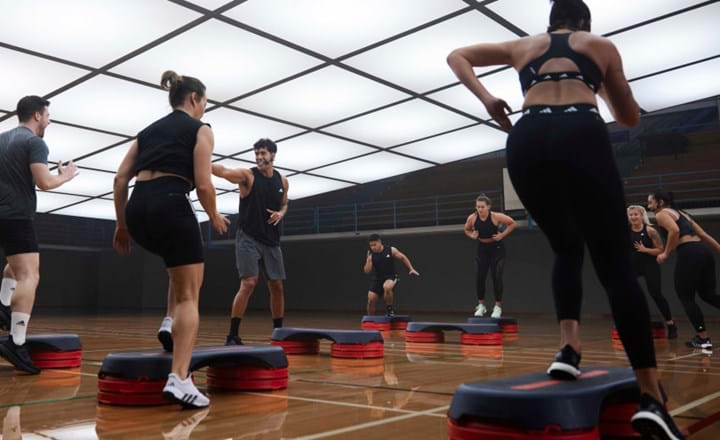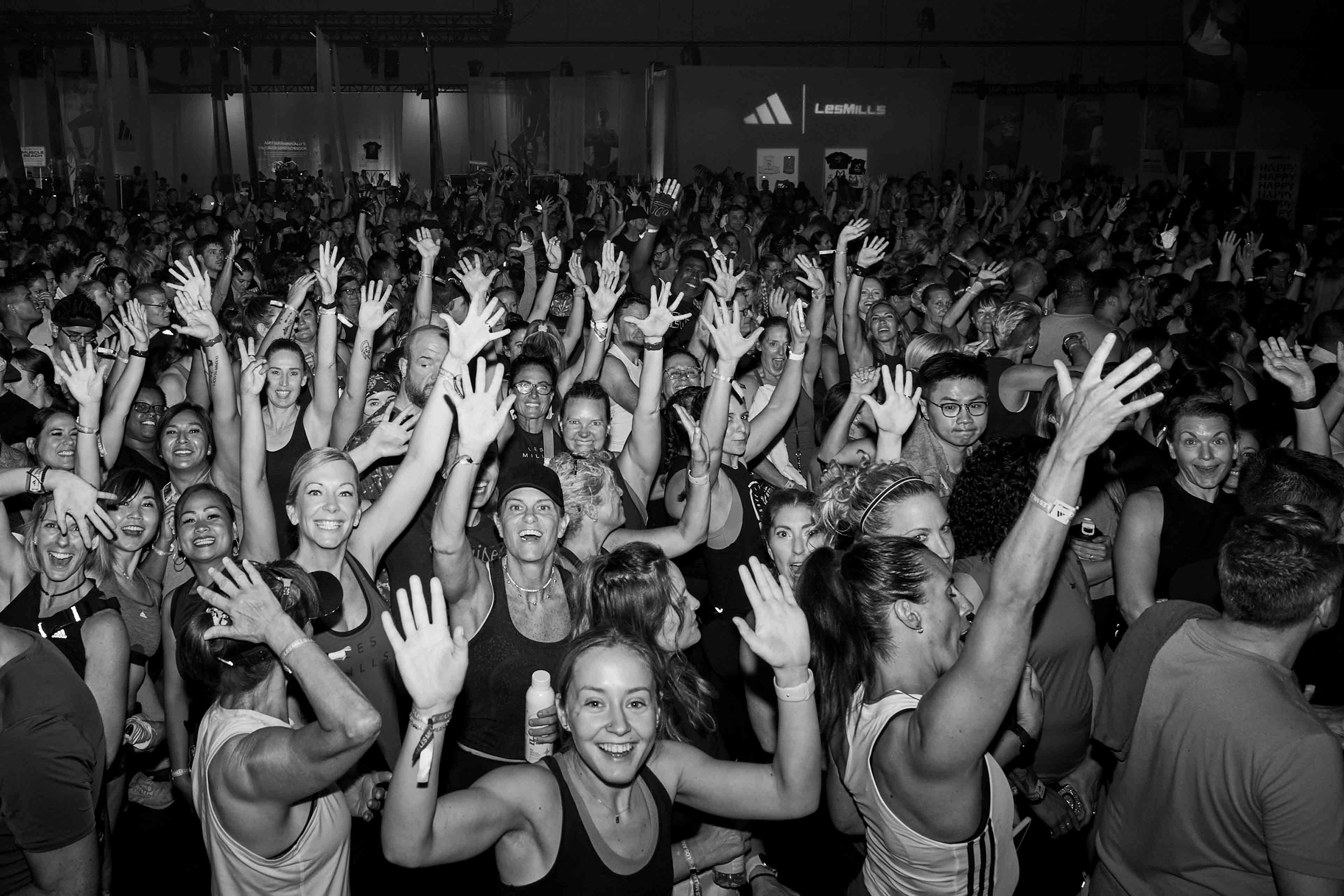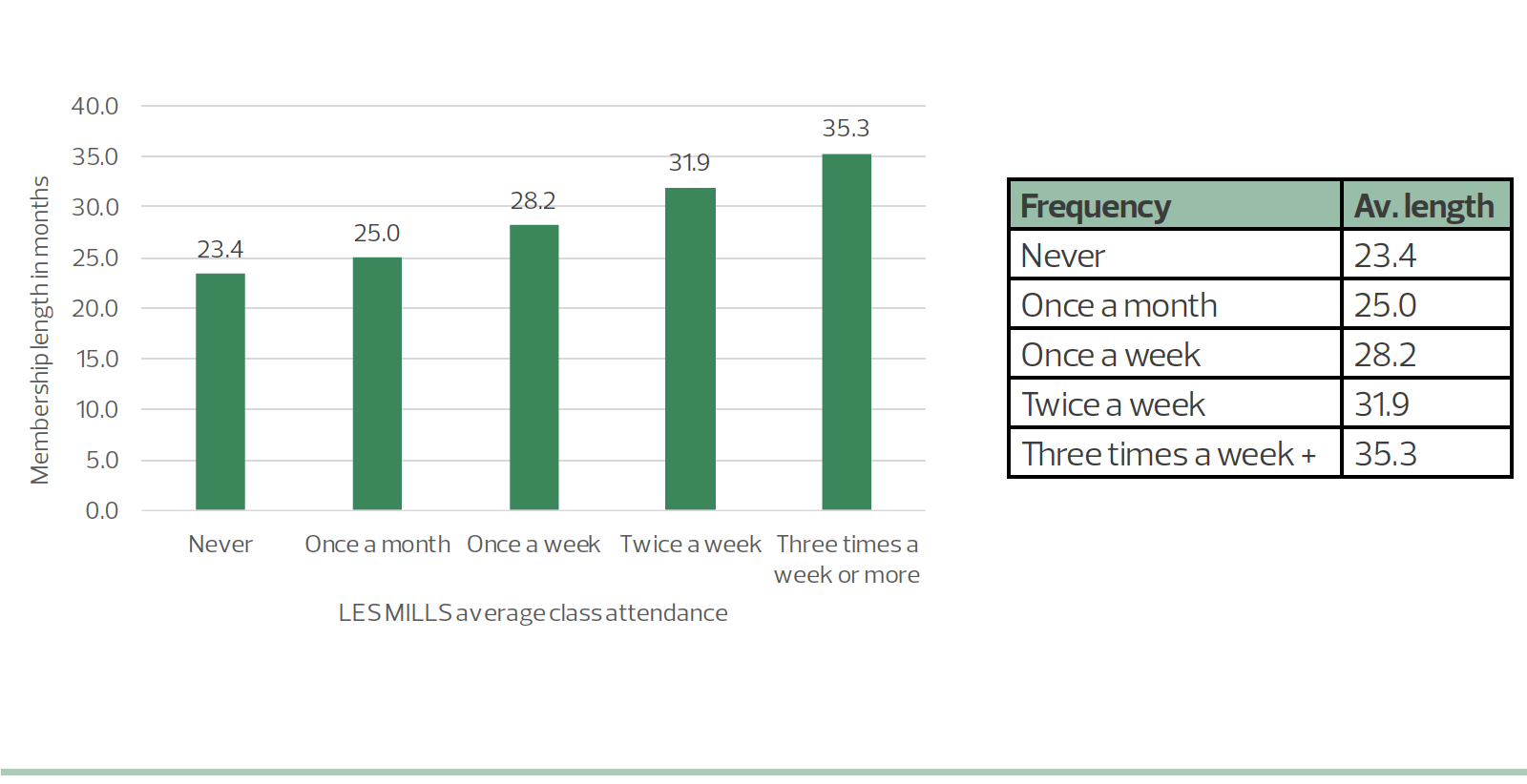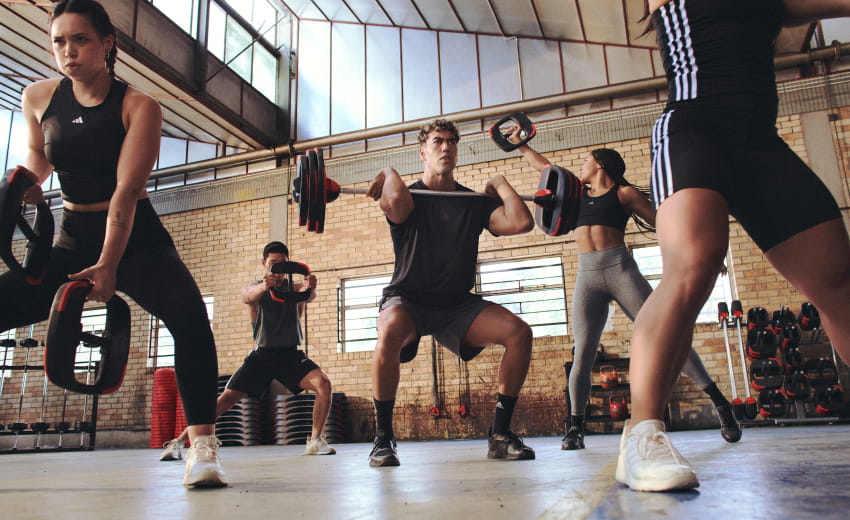
As demand for strength training continues to trend upwards – particularly among younger members – operators across the world have been swapping out cardio equipment for extra weights stations on the gym floor.
But despite these efforts, lengthy queues at the squat racks and cable towers are becoming a familiar sight on the gym floor – and a familiar source of frustration for members.
At a time when average membership tenures are now trending shorter than pre-pandemic, elevating the in-club experience and removing pain points is key to keeping hold of members for longer and protecting revenue.
When space is at a premium, easing these gym floor bottlenecks and managing footfall requires funnelling members into other areas of the club where more people can be serviced simultaneously.
By signposting members from gym floor pinch points like the squat rack and bench press to high-capacity areas like the studio, operators can 10X the number of members they can support, while unlocking capacity to fuel further member growth.
So what does it take to spread the load and maximize the profitability of your club? Here are 6 tips for managing club footfall and driving more members into the studio.
1. Map your club’s latent capacity
One of the first steps to managing footfall is to map the areas of your club where you do have surplus capacity.
“The biggest thing for operators of all sizes in managing footfall is to ensure they’re signposting members to other areas of the club where they’re able to service more people simultaneously – such as the group exercise studios, functional areas, etc…” notes Retention Guru Dr Paul Bedford.
“You can do this through onboarding and then through ongoing member comms, but if you take it back one step further, you can use these capacity insights to inform your marketing strategy. So if you know you’ll struggle to service more members using your strength equipment (and you’ve done everything you can to maximize capacity) then you’re better off targeting prospects who will predominantly use the areas of the club where you still have capacity to fill. You’re in a better position to meet the needs of these prospects, so they’ll likely stay longer and yield a longer lifetime value, representing a better RoI for your marketing dollars.”

2. Quantify the opportunity
Having identified where you have capacity, a useful next step is to calculate (where possible) the benefits you’ll see across each area of the club to help decide which areas to prioritize.
These benefits may include revenue uplifts through higher membership dues (if you’ve driving traffic towards areas that require a higher-tier membership package) or by increasing these members’ average tenure.
For example, a study by the ukactive Research Institute found members who do 3 or more Les Mills classes per week stay with their club for 50% longer than those who don’t do classes – equating to an extra 9.8 months of dues per member. In other words, the members who were doing regular group training had twice the lifetime value of gym-only members.

The graph above shows how the average membership length of live members differs by the rate of attendance to Les Mills programs. The importance of driving members towards the studio is highlighted by the consistent increases in membership length as the frequency of class attendance goes up.
As some of the group’s largest facilities in the US, Gold's Gym Newburgh and Middletown in New York are renowned for the strength of their group training offerings.
“All the research shows that nailing group workouts is key to driving retention and winning member referrals – it's been a real game-changer for us,” says owner and managing partner Don Murphy.
3. Transform your timetable
Freshening up your timetable gives members something new to get excited about – and it’s a great excuse to start speaking to gym floor members about your studio offering.
For Tash Vincent, the Group Fitness Manager at Les Mills Auckland City, freshening up a timetable is an opportunity to strengthen the slots with room for growth, without messing with the star performers that consistently pull in the numbers.
“When we’re putting a new class on the timetable, they either need to go into a timeslot that doesn’t exist yet, or they replace another class. I’ll consider the class attendance numbers and the performance of programs overall when I make that decision. If we’re replacing an Instructor’s class with a new class, we always give them the opportunity to train in that program and hold onto the timeslot,” notes Tash.
“A lot of members might only be able to attend the 6pm timeslot, so we want to make sure we’re offering them variety in their training. It’s looking at the timetable horizontally, rather than vertically, and making sure there are lots of options – i.e. what are we offering at 6pm every day of the week? Will that member get a good mix of training stimuli? We also have the two studios, so we try to ensure that if there’s a strength class on upstairs, there’s a cardio one downstairs, or vice versa.”
4. Nail new member onboarding
The best way to spread footfall across the club is to set members up for success from the very start of their membership by providing effective onboarding that familiarizes them with every corner of your club.
Many clubs focus on the sale and then assume the member will be fine left to their own devices. Little wonder then, that 50% of new gym members quit within six months (IHRSA, 2020).
Make sure your team are primed to nurture new starters, signpost them towards different activities and regularly check in with them as they arrive at the club and leave. And if they’re not already working out with friends, consider ways to help them make new ones.
“Nobody ever left a gym because they had too many friends,” says Ish Cheyne – Head of Fitness at the 12-strong Les Mills New Zealand (LMNZ) chain of clubs, where group fitness typically accounts for 50% of overall gym attendances. “So whether it’s allowing new members to bring a friend for free for a week, encouraging people to join as a group, or steering new members towards the ready-made community of the group training studio, do everything you can to help members develop friendships within the club.”
“This not only makes the experience more fun for new members – and therefore something they’re more likely to repeat – but it also creates multiple points of contact for them in the club, meaning they’ll be missed if they don’t attend.”

5. Add weight to your strength classes
Enticing strength fans away from the gym floor requires a solid mix of strength-based classes on your timetable that can support regular lifters and newbies alike. Mixing up these classes between the studio and functional areas of your club is another great way to spread capacity and showcase these experiences to members who might otherwise not see what goes on inside the studio.
“There’s so much momentum behind strength training right now – more and more people are beginning to understand its importance and building strength has become the most popular way to train,” says Les Mills Program Creator and Presenter Erin Maw, noting that a variety of strength offerings is key to keeping members satisfied. “Through trialing and launching new programs, we’ve seen just how much members love trying different ways to get strong.”
The 2023 report Gen Z Fitness: Cracking the Code found that 64% of Gen Z exercisers have a strong preference for choosing different workouts, as well as discovering new ones. Their enthusiasm for strength and conditioning workouts has led to sculpt workouts – such as Stretch, Yoga and Pilates classes – experiencing a resurgence in clubs as a complementary training modality for building and toning muscle. The report showed strong appetite for sculpt workouts – with 63% of Gen Z exercisers enjoying Reformer Pilates, 57% doing Yoga, and 55% taking part in mat Pilates – suggesting there’s plenty of demand for more strength variants across the club in 2024.
6. Embrace in-club events
Events are a dynamite way to create excitement among members and showcase the breadth of options for members to enjoy beyond the gym floor.
One option could be to follow the lead of the YMCA Association of Northwest North Carolina, which kickstarted its peak sales period with a group training rock concert as a means of engaging the community through a dynamic event.
Meanwhile, the JCC in Bridgewater, New Jersey has driven strong growth through a focus on in-club events that emphasize the social elements of their studio offering.
“Things like our quarterly Les Mills launches are calendar mainstays that help light a fire under our timetable,” says Fitness Director Jess Kichura. “We’re always striving to add personal touches to our events and marketing that evoke strong emotions and show our members we truly care through action rather than words.”
Eye-catching, high-quality promotional material is also important for getting the event in front of your target audience. If you’re already a Les Mills partner, don’t forget to use the large suite of assets available via Marketing Studio.
READY TO UNLEASH YOUR NEXT GENERATION OF MEMBERS?
Les Mills has crafted a new series of programs to meet the specific demands of Gen Z and put your club in the fast-lane for growth.
DISCOVER MORE
